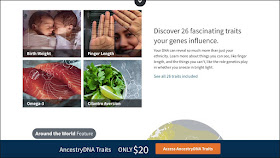Back in June of 2012, MyHeritage.com began a revolution in the world of online genealogical database website with the introduction of SuperSearch™. The key factors in this revolution were the vast increase in the accuracy and expansion of the coverage of the searches automatically made on behalf of those users who maintained a family tree on the website. Over the years, the number of records searched, the accuracy, and the depth of the searches have continued to increase. However, the full benefit of this sophisticated technology is only available to those users who have a Premium Plus subscription to the program and also include a further data subscription. From my own experience, the benefits of these advanced tools far outweigh their cost to the user.
One of the main benefits of the SuperSearch™technology is the constant searching of over 9.7 billion historical records. All of the individuals in your personal family tree matched to all of the records. If you have a large family tree, such as mine, the number of matches can easily run into the thousands as you can see from the image above showing that I have a reservoir of over 6,000 Record Matches. My experience here in the United States is that most new users almost immediately begin to get results from the Smart Matching™technology but Record Matches depend on adding enough information to a family tree to connect with the records on the website.
With millions of new records being regularly added to the MyHeritage collections, over time, you should begin to see results from the Record Matches. If you are wondering what records are available on the MyHeritage.com website, you can see the entire collection in the Collections Catalog located under the Research tab on the menu bar at the top of the website's pages.
When you have a family tree on the website, you will find links to each individual's Record Matches and Smart Matches in the form of icons. The little brown icons represent Record Matches and the little green icons represent Smart Matches.
The icons represent the presence of Record Matches but not the total number. Here is an example of what you might see if you click on a Record Match icon.
In addition to the icons on the individuals on your family tree, you can also see lists of the Smart Matches either by the sources in the record collections or by individuals. Here are images of the two options. The links to these lists are under the Discoveries tab on the menu bar. Here is a screenshot of matches by people:
And here is a screenshot of matches by source:
If you find a source you wish to attach to an individual in your family tree, here is the process. I found this Record Match to a newspaper account for one of my ancestors.
Now I can review the match.
 |
| Different parts of the screen scroll and are not adequately represented by the screenshot. |
In addition to the individual record match, MyHeritage.com has extended the search using the MyHeritage Record Detective technology and found 40 additional records. These additional records need to be individually evaluated. Here is a screenshot of some of these additional records.
Not all of the Record Detective records pertain to the main individual. They could be anyone related to this particular individual in some way or that are mentioned in the primary record. Here is a short explanation of the Record Detective technology:
Most of MyHeritage’s technologies begin with your family tree, which is the obvious starting point for finding matches relevant to your family history. But what if you have searched on SuperSearch™, and have found a record that is a good fit for one of your ancestors? In this case, your starting point is a record, not your family tree.
This is where the Record Detective™steps in. The Record Detective™ looks to see if this record is connected with any people on MyHeritage family trees and if those people have matches to other people or other records. If so, then these other records are about the same person as the record that you’re looking at now. Record Detective™ goes behind the scenes to try to find other records about the same person you’re looking at and magically delivers more relevant records to you.
All of this is done automatically with extremely high accuracy, thanks to the accuracy of the underlying Record Matching and Smart Matching™ technologies.
With the Record Detective™, records know who they are about — every record can lead to more records about the same person.As you can probably tell from what I have already written, you could spend a considerable amount of time adding records to your family tree just from on main record search. However, you can focus on specific people rather than be driven by the matching technology. But if you are just starting out with a few people in your family tree, I suggest you may wish to keep adding records as they are found until you become interested in a specific family line or exhaust the immediate resources on the website.
I should mention that as I worked on adding these sources, the number of Record Detective sources quickly rose to 88. As you proceed to add sources and individuals to your family tree, you will soon begin to realize the importance of carefully examining and evaluating those records to make sure you are accurately attaching correctly identified records to individuals in the family tree and also obtaining all of the information from the records.


































